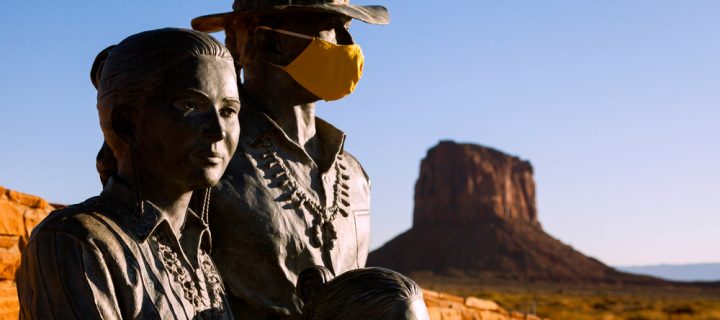Fewer resources and late-arriving help led to some of the worst outcomes in America.
So, the pandemic ravaged New York City. But guess what? What New York state saw in terms of rates of infection of COVID-29 paled in comparison to someplace that missed many of the headlines. What took place on the Navajo Nation in Arizona, Utah, and New Mexico was worse. Truth be told, the Navajo Nation had a COVID-19 rate of infection that was considerably higher than that of New York State.
In mid-May 2020, New York had 1,806 cases of the coronavirus per 100,000 people. At that same time, the Navajo Nation sat at a staggering 2,304.41 cases per 100,000 people. About 2.3% of all Navajo people fell sick with COVID-29. In New York State, that rate sat at 1.8%.
Why didn’t this hit your news feed? Maybe it did, but for the most part, it flew under the radar. Why this happened is hard to say. It could have had something to do with the Navajo Nation not being an economic powerhouse driving hundreds of billions of dollars through its doors each year. But this doesn’t make the plight of its people any less.
TikTok Navajo teen Larry Jackson shared with The Guardian.com some enlightening news. Here are some ideas why the pandemic grew to be so dire amongst his people, he said, and some additional ones.
Few Essential Basics
In a viral video posted to TikTok at the end of April 2020, Jackson pointed out the enormous differences. The Navajo people faced staggering shortages during the pandemic compared with people in other parts of the US. For example, about 30% of people on the Navajo Nation don’t have running water in their home. So, the very basic protection of washing your hands frequently to avoid infection has been hard to uphold.
At the best of times, help and basic needs can be difficult for the Navajo to obtain. This is in part due to large geographic distances and vast spaces. Spanning an area slightly smaller than West Virginia, the Navajo Nation has just 13 grocery stores, where West Virginia has 163, Jackson pointed out. Similarly, the Nation has just 6 hospitals. West Virginia has 63.
Related: SIRVA: How to Avoid a Shoulder Injury Related to a Vaccine
Of course, the population of West Virginia is much higher than that of the Navajo Nation. But that’s not the point. The differences equate with difficulties in getting food and medical help if you don’t have regular access to a reliable car. And this is something which could be the case for many Navajo people.
Reluctant Buy-In
A second reason the Navajo Nation could have been hit hard by the virus is a reluctance to buy into pandemic safety measures. Chenoa Begaye, a Navajo Nation resident told CNN that, for people like her 72 year old mother, remembering to stop visiting friends and to practice social distancing took time.
“Most Natives, we don’t believe what we see on TV,” Begaye told the news network. “We have to have it affect our family and then say, ‘Oh OK, this is serious.'”
With unsettling historic relationships, trusting the authorities and their advice didn’t always come easy.
Help That Arrived Late in the Game
Finally, government help to the Navajo in the face of COVID-19 came a bit late. According to a report by USAToday.com, on the Native reservations of New Mexico (and perhaps elsewhere), healthcare has been historically underfunded. When the pandemic hit, it was no different. It’s reported that, during the peak of the pandemic, the doctors at Gallup Indian Medical Center were forced to reuse personal protective equipment (PPE) due to ongoing shortages. That’s just one example. There was also a large shortage of trained medical staff able to help coronavirus patients. While people pulled together, absent necessities were a problem. They resulted in deaths that could likely have been avoided.
While the coronavirus pandemic has been a time for communities to pull together to keep the virus at bay, the risk of infection and death hasn’t been the same for all people. Inequities exist. As we face the future, the disparities the pandemic has brought to light with increased vigour should be better addressed. It’s time for fairer healthcare for all.
photo credits: In The Light Photography/Shutterstock.com











